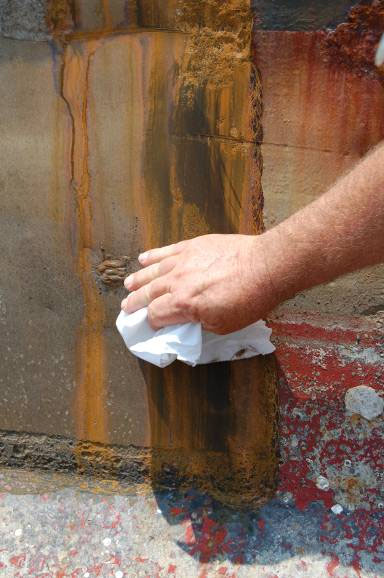A Primary Mission of the Council is to promote effective means of surface preparation in the maintenance industry using water and water/abrasive blasting techniques.
Abrasive blasting is one of the oldest and most popular surface preparation methods used in the bridge painting industry.
Recyclable Steel Grit (RSG) blasting is very similar to expendable abrasive blasting except that instead of simply discarding the abrasive waste, it is recycled several times through specialized machinery that separates the paint, mill scale and rust from the reusable steel grit.
The steel abrasive is reused until it breaks down into a sufficient size to be removed with the waste from the recycler.
Most RSG equipment setups consist of a blast pot, recovery vacuum, recycler unit, and air compressor.
Specifically, five maintenance painting projects were visited in an attempt to ascertain the cost associated with RSG.
The contractor, Peter Mitchell Inc., East Petersburg, PA, used IPEC recyclable steel grit blasting equipment and used a custom-made suspended plywood platform.
Utilizing several blasters, the contractor was able to quickly blast the structural steel.
The staging incorporated was manufactured by Bridge Vail International and allowed for full negative pressure containment, automated recycle of the used abrasive, and no traffic control to conduct during the project.
Higher output pressures resulted in higher productivity rates, but workers reportedly became fatigued much more quickly.
Blasting with recyclable steel grit can achieve a production rate of 170-200 ft2/man-hour or higher, as opposed to expendable grit, which has a production rate of about 100-120 ft2/man-hour.
In addition to high capitol costs, RSG requires additional equipment over “once through” abrasives, increasing maintenance.
[Download not found]











April 5, 2009
Main Library